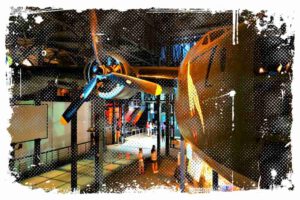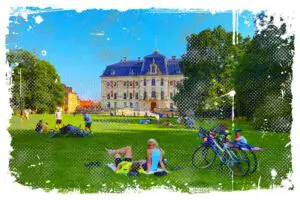Welcome to my guide to abandoned palaces. Poland is actually a country with a rich history, and that’s reflected in the beautiful and grand palaces that can be found throughout the country. Not all of these palaces are still in use, however. Many of them have been abandoned and left to decay. They have now been forgotten and are merely relics of Poland’s past.
In this guide, I will take you on a tour through some of the most breathtaking abandoned palaces in Poland. We’ll go from the grand mansions owned by the ancient aristocracy to the small residences of the former rulers. I’ll explore the history and stunning architecture of those forgotten treasures. Also, I will provide you with practical tips on how to visit these palaces, as well as information about their current condition and what you can find inside.
1. Palace in Bożków
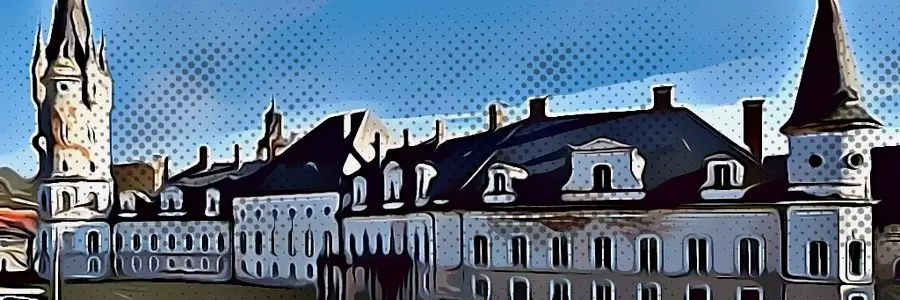
This is one of the most beautiful palaces in Lower Silesia. It used to be amazing in terms of wealth and splendor. It was not only beautiful in the 16th century, when it was built, but also in the PRL times (People’s Republic of Poland), although at that time various schools were located here. Sometimes there is information on the Internet that this wonderful building will be converted into a luxurious hotel. Some people also whisper that Prince Charles is interested in the palace in Bożkow. All of this, however, is based on internet rumors.The palace is on sale for 6,700,000 million zlotys and has not yet found a new owner.
The history of the building is quite complicated. The palace has passed through many wealthy hands. After the fire in 1870, it was rebuilt for the last time. Since 1999, the palace in Bożkow has been owned by the city. In 2010, an unknown buyer from Sobótka invested in this massive building. Can the palace be visited? Not always. If you talk to the palace caretaker, you can arrange a tour of the inside of the building with him.
↳ PRO TIP: Do you like traveling? Then before you buy any ticket or book an attraction, check if it's available in this worldwide Viator Database. You may save a lot of money and time. No need to thank me :)
Palace in Bożków: GPS Location
- https://goo.gl/maps/xqNeUhW3bouxLUHr6
- 50.512614333697144, 16.57508142184656
2. Palace in Krowiarki
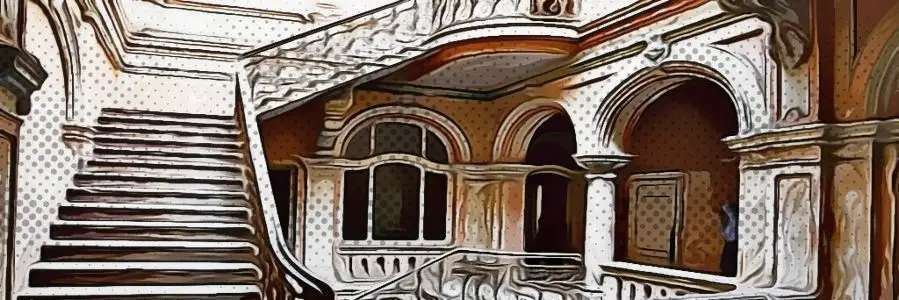
The amazing palace, or rather the whole palace-park complex, is located in the village of Krowiarki (Silesia province). The Donnersmarck, Strachwitz, and Gashin families used to live here. Today, no one lives in it, and the beautiful building is deteriorating more and more every day. It is difficult to find an owner who would take care of such a large space – 115 rooms, 30 cellars forming a labyrinth, and a large palace park.
Up until 2015, a private investor allocated around PLN 20 million for the renovation of the palace and park. The work continues, but very slowly – the palace in Krowiarki is a bottomless purse. Therefore, it is unknown whether the entire building will ever be restored. The palace can be seen from the outside when the gate on the premises is open. Usually, however, you have to make an appointment in advance to visit.
Palace in Krowiarki: GPS Location
- https://goo.gl/maps/k4Rd4UkRQa1TZWQX9
- 50.137181692785354, 18.082800838332915
3. Palace in Mokrzeszów
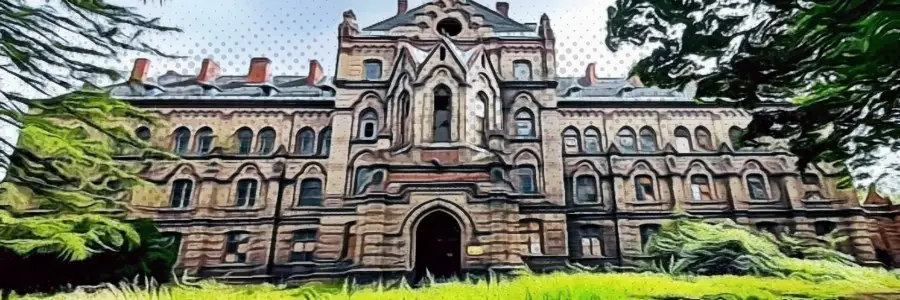
The building was established by the Knights of Malta in 1860 and is located in the Lower Silesian village of Mokrzeszow. The palace is charming, but also very mysterious. However, the most dark is the history of the building.
During World War I, it served as a hospital for German pilots and later became a sanatorium. In 1926, the Knights sold the building to a Jewish businessman, but after Adolf Hitler came to power in Nazi Germany, the businessman was forced to leave the palace. This marked the darkest chapter in the palace’s history as it became a location for the implementation of Hitler’s Lebensborn policy. From 1938, it operated as a „factory for Aryan children” called the „Mothers’ House”, where selected Germans lived with women to produce children of „pure German race”.
In 1945, the „production of Aryan children” was ended. It turned into barracks for Soviet soldiers and later into a school, which operated until 1982. In 1995, the palace in Mokrzeszow was purchased by a German family. They planned to open a luxury hotel inside it, but they disappeared. Today it is difficult to get inside the palace, as it became a property of the Świdnica governor’s office. Will someone be able to buy the palace in the future? Unfortunately, it is not known. What is known, however, is that the palace in Mokrzeszow is falling into increasing disrepair.
Palace in Mokrzeszów: GPS Location
- https://goo.gl/maps/g6Cei9GtZLvEt4Te6
- 50.85229632326096, 16.37191621838387
4. Palace in Ząbkowice Śląskie
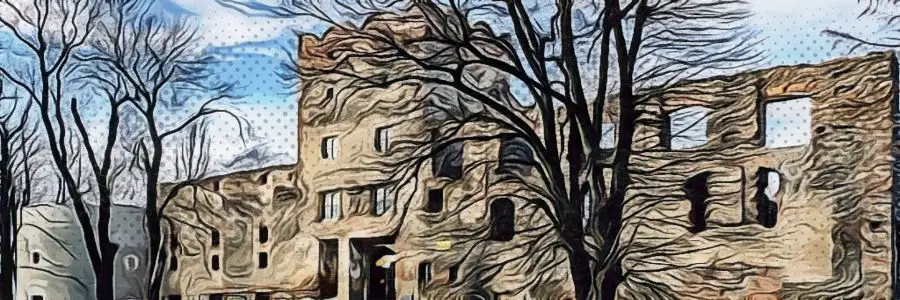
If you’re a history or architecture enthusiast, the Lower Silesian province in Poland is the perfect destination for you. It has the largest number of abandoned castles and palaces in the country. One of the most breathtaking is the Renaissance castle in Ząbkowice Śląskie. Built between 1522-1532, this castle was finally abandoned in 1728, and a fire in 1784 completely destroyed its structure.
Although the castle is still a ruin, it has been secured and is being maintained and preserved. This means that you can visit the castle and explore its ruins both from the outside and inside. Simply purchase a ticket and you’ll be able to experience the rich history and stunning architecture of this incredible building.
Palace in Ząbkowice Śląskie: GPS Location
- https://goo.gl/maps/CYLWarGHYUDZioKz8
- 50.586388651878444, 16.80735819791673
5. Palace in Rząśnik
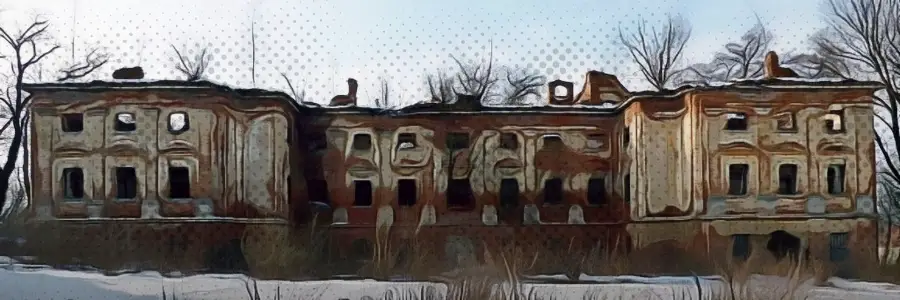
This is another beautiful, but abandoned building in Lower Silesia. It is hard to believe that it was once one of the most beautiful and largest residences in the Kaczawa Mountains. The palace in Rząśnik was built in 1734 and was restored and renovated in the 19th century. Today, it is a ruin like many others in Lower Silesia.
After 1945, local farm employees lived here. Apart from repairing the roof in the 1960s, the palace in Rząśnik was never fully renovated. Today, it is just a ruin, covered by wild plants. It does not seem that anyone will clean up this place and restore its former glory.
Palace in Rząśnik: GPS Location
- https://goo.gl/maps/nNYbRC4bEQykRzRN8
- 51.01613931799308, 15.778882353736984
6. Palace in Mańczyce
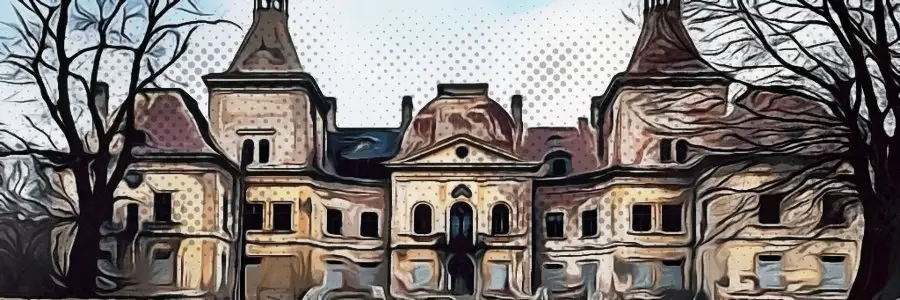
The palace was built in the Lower Silesian village of Mańczyce in the 16th century. The von Stosch family remodeled it into its current shape and form, which is estimated to have happened around the end of the 18th century.
Today, the palace in Mańczyce is abandoned and is desperately seeking a new owner. The Baroque building in Lower Silesia costs 3,000,000 million złoty. The building can only be admired from the outside as it has been secured to prevent uninvited guests from entering.
Palace in Mańczyce: GPS Location
- https://goo.gl/maps/ywNMHgW9awm7GDTP7
- 50.860062590665194, 16.97403575555463
7. Palace in Tworków
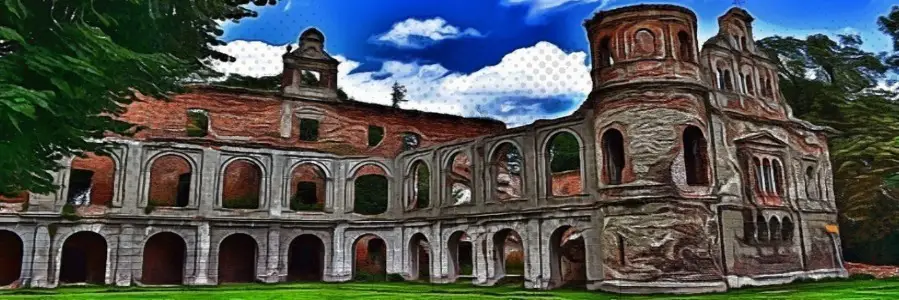
The palace, or rather its ruins, is located in the Raciborz district, in the city of Tworków (Silesian Voivodeship). There used to be a medieval fortress here, and then a Gothic castle. During the Thirty Years’ War, it was a military barracks. The last known owners of the palace were the von Saurma-Jeltsch family (1841). In 1931, a private buyer of the palace reportedly set it on fire intentionally to get insurance compensation. At least that’s what the residents of Tworków and the District Court in Raciborz say. The owner at the time did not receive compensation.
In 2016, the Krzyżanowice municipality received money to restore the tower and palace ruins. Today, you can visit the palace and admire its former glory. You can climb the palace tower. It’s worth doing because the tower is 21 meters high. From the top, you can see a beautiful panorama of the surrounding area. Visiting the ruins, the surrounding park and pond is free.
Palace in Tworków: GPS Location
- https://goo.gl/maps/oqLFgLf5nkaK2YEj7
- 50.011702920911574, 18.236749473666723
8. Palace in Bratoszowice
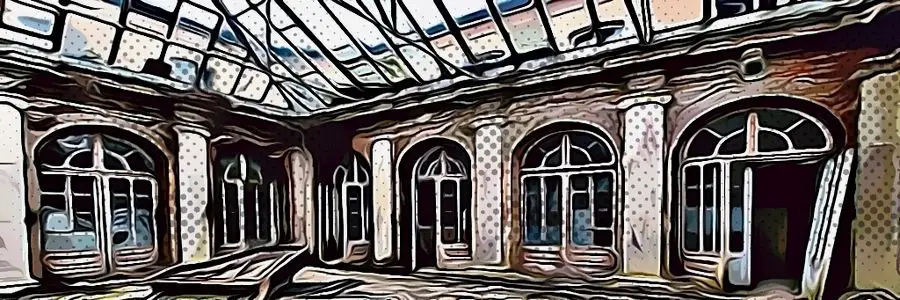
The palace is located in the Łódź voivodship. It is still very popular among visitors today. It was built in 1921-1922 as a summer residence for the Rzewuski family. Since 1945, the palace has been home to a agricultural school and later a boarding school. The palace also provided housing and offices for the school’s staff. In 1985, the Rzewuski residence was destroyed by a fire and has remained in ruins ever since.
The palace in Bratoszewice is listed on the registry of historical sites along with its surrounding park. The building is in poor condition, but still attracts thrill-seeking tourists. There are rumors that the palace has returned to the Rzewuski family. It’s possible that the family will restore the palace to its former glory. We’ll have to wait and see.
Palace in Bratoszowice: GPS Location
- https://goo.gl/maps/LpzouUzu5v3VAnzN9
- 51.930211864083525, 19.65276361327209
9. Palace in Goszcz

The palace in Goszcz is undoubtedly one of the lesser-known gems of Lower Silesia. It was built in the years 1730-1740, replacing a 12th century castle. In 1749, the palace in Goszcz was destroyed by a huge fire. In its place stood a new building, designed by Karl Martin Frantz. The Reichenbach family lived there until 1945, when the Soviet army took over the palace. In 1947, the palace burned down again.
For many years, the building has been in ruins. However, the municipality of Twardogóra received a grant of about PLN 9 million from the European Union, thanks to which the palace ruins will be able to be renovated. There is hope that in a while, the palace in Goszcz will be a beautiful place again, open to tourists for visiting.
Palace in Goszcz: GPS Location
- https://goo.gl/maps/mSCbnvfSsP9DuNTU6
- 51.39569902949674, 17.481586681455276
10. Sybilla Palace in Szczodre
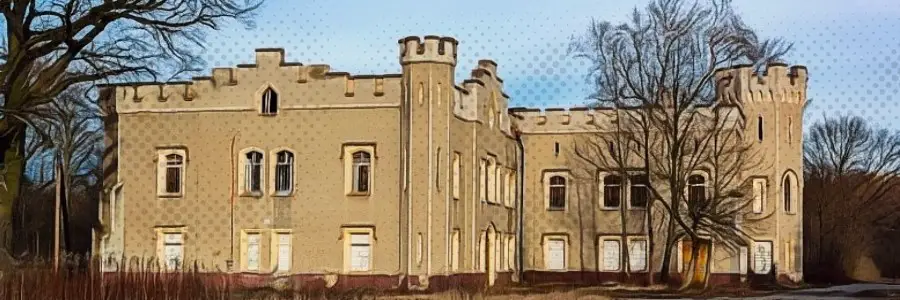
This palace is located in Lower Silesia and was built between 1685-1692. It served for a long time as the residence of the Oleśnica princes – Wirtembergs, Welfs, and later Saxon rulers. The palace was often referred to as the „Silesian Windsor”. In 1945, the building burned down and was not rebuilt. In 1992, the palace was purchased by a private company, and in 2001 it was in the hands of a individual.
Today, nobody seems to remember the amazing palace, which is overgrown with wild vegetation. The Sybilla Palace in Szczodre was entered into the register of monuments in 1990. It is really worth visiting, even though there are not many traces left of the „Silesian Windsor”. However, you can walk around the building and admire what has not yet been damaged by time.
Palace in Szczodre: GPS Location
- https://goo.gl/maps/y9CP9z3LJgEkKSij8
- 51.19542942228386, 17.192713382556004
11. Palace in Pruszków
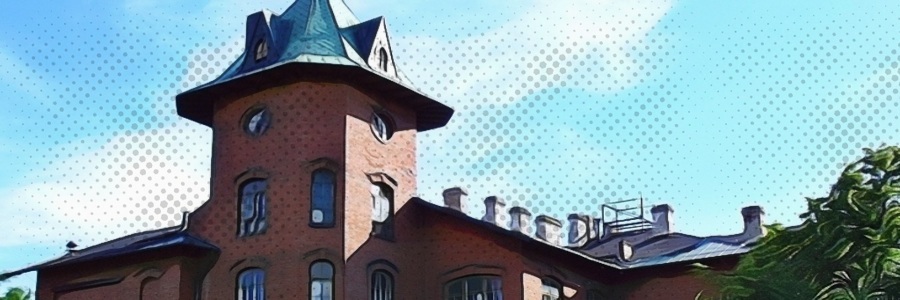
The brick palace in Pruszkow, just outside of Warsaw, was built in 1908 as a hospital for the workers at the nearby Railway Workshops. However, in the summer of 1915, it was taken over by Russian troops. As was their habit, the Bolshevik army completely robbed the building, and the Railway Workshops themselves were blown up.
In independent Poland, the palace housed a primary school called „Kolejówka”. During World War II, the Germans took over the building, but they kept the educational function of the institution. They kicked out the Polish teachers and students, and then filled the palace with German children from an evangelical school, for whom they created a boarding school. In the PRL period, the palace was the site of Primary School No. 5, but only until 1974.
In the 1980s and 1990s, the palace was the headquarters of the „Tramp” tourist hostel. It then passed into the hands of a Polish-Greek company, and since then has fallen into ruin. The abandoned palace is now a attraction for horror movie fans and a meeting place for Satanists. In one of the rooms of the building, a pentagram can be found on the floor, along with candles and Latin inscriptions indicating that the palace in Pruszkow was a place where black masses were held.
Palace in Pruszków: GPS Location
- https://goo.gl/maps/awiZvXvf9acnv6xh8
- 52.178822947842605, 20.821892651914634
12. Palace in Kopice
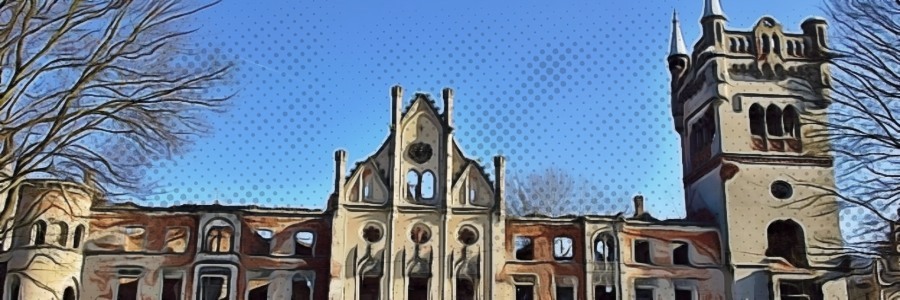
This 19th century palace in Opole province is surrounded by a park with ponds, and was damaged by warfare, subsequent acts of negligence and the events of 1958, when it was set on fire by unknown criminals. But the darkest episode in the palace’s history reportedly happened shortly after World War II. This is when the Schaffgotsch family tomb was profaned.
After the war, the palace began to be plundered by local residents. Thieves also did not skip the tomb. The coffins with mummified bodies were opened for valuables. For years, there have also been stories as to how the bodies of members of the Schaffgotsch family were taken out of their graves and placed nearby a pub. The tomb was brought to order only in the 1970s.
Palace in Kopice: GPS Location
- https://goo.gl/maps/DpzsmFXL6CZSdyex7
- 50.64597183713719, 17.446255367190282
13. Palace in Prośno
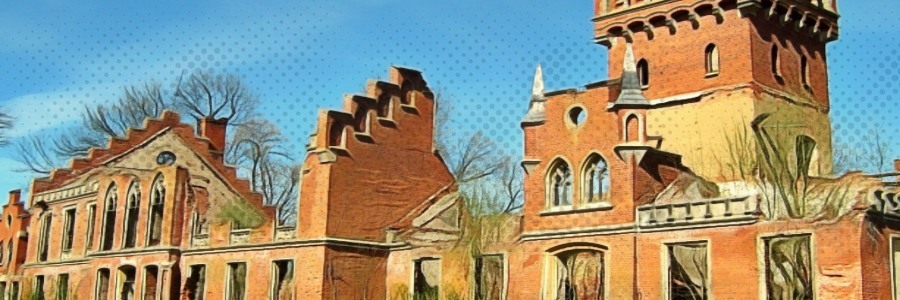
During World War II, the 17th century von Eulenburg palace in Warmian-Masurian Voivodeship was looted and vandalized by the Red Army. According to the locals, a mysterious event occurred at the palace in 1947. One night, a truck drove up to the palace and armed men began searching the building. The mysterious nocturnal visitors took various things from the building, including barrels, canned goods, and many packages of unknown contents. When the curious local residents looked into the palace a short time later, they found an emptied, bricked-up vault in the basement. To this day, it is not known what was taken from it.
Palace in Prośno: GPS Location
- https://goo.gl/maps/R7qkX9US6MpGnkFR8
- 54.23593028700117, 21.07801179988102
14. Palace in Guzów
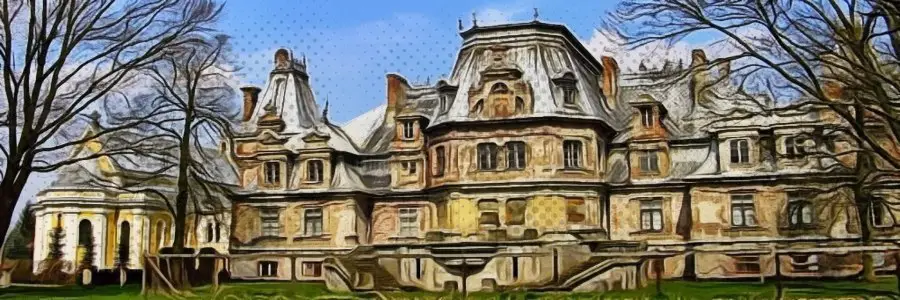
In Guzow (Masovian Voivodeship), you can admire the ruins of the 19th century Sobański Palace, which is often compared to beautiful French castles along the Loire. However, war damage and neglect during the communist era brought it to a pitiful state. The palace was regained by the Sobański family, and is gradually being restored to its former glory. The building has an interesting history from the war period.
According to the family’s memories, it was in this palace, in the so-called „large salon” that Adolf Hitler signed the order to finally conquer Warsaw. He also held a grand banquet for this reason. When he left, Hitler supposedly left a letter to the owner of the palace expressing regret that the German army had caused so much damage to it. Apparently, throughout the war, Germans came here to admire the place where such an important military decision was made.
Palace in Guzów: GPS Location
- https://goo.gl/maps/yy2eojprk8Twhw9S9
- 52.11552303839606, 20.3346790825961
Conclusion
In conclusion, abandoned palaces in Poland offer a fascinating glimpse into the country’s rich history and cultural heritage. These grand, ornate buildings stand as a testament to the power and wealth of their former owners. While they may no longer be inhabited, they continue to capture the imagination and draw visitors from all over the world. Whether you are interested in exploring their architectural beauty, learning about their past, or simply taking in the mystic atmosphere, these abandoned palaces are definitely worth a visit.
Bibliography:
- https://i.pl/piekne-ruiny-z-mroczna-historia-zobacz-najciekawsze-opuszczone-wille-i-palace-w-polsce/gho/c9-14567487/5
- https://intotheshadows.pl/opuszczone-miejsca/dwory-i-palace
- https://en.wikipedia.org/wiki/Soba%C5%84ski_Palace
- https://en.wikipedia.org/wiki/Kopice,_Opole_Voivodeship

